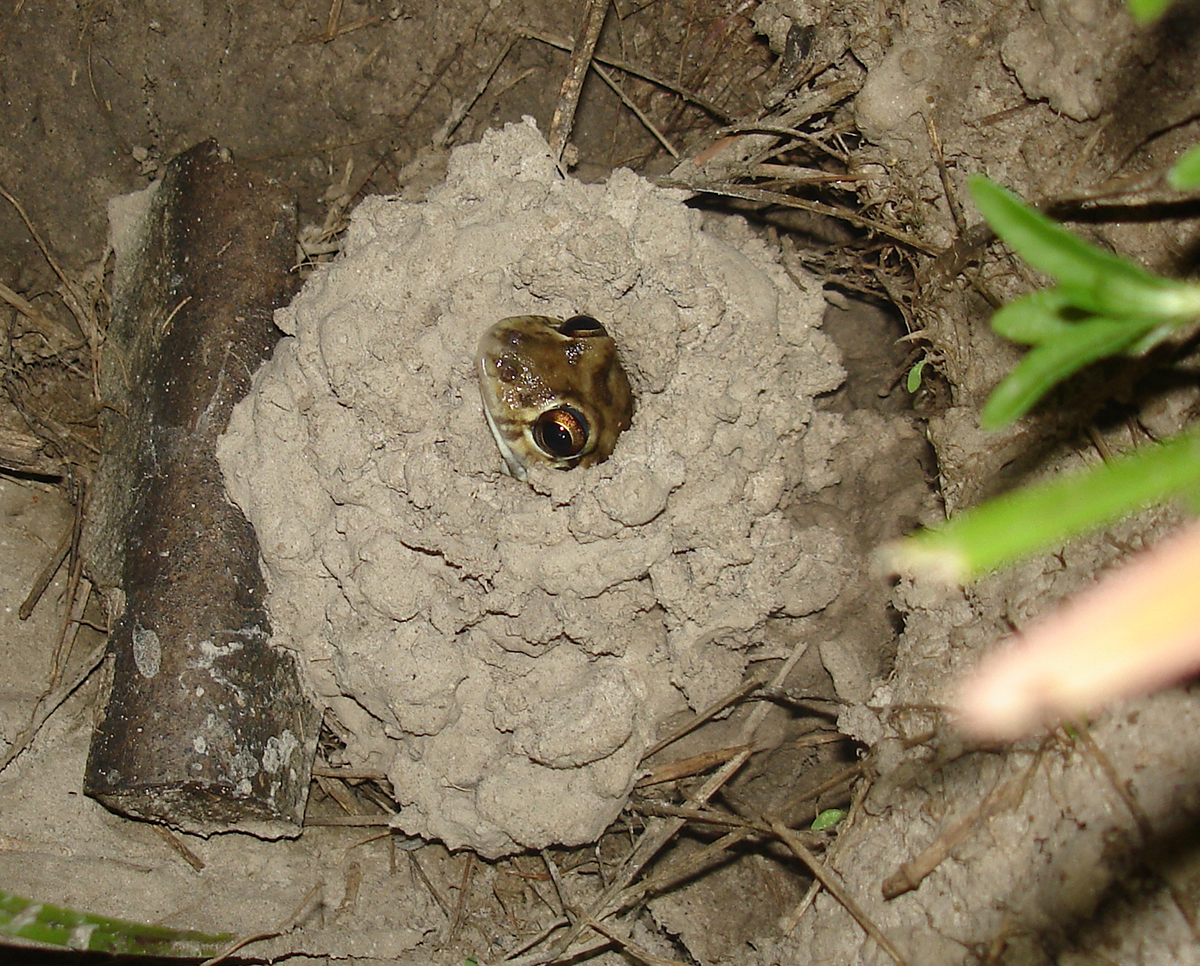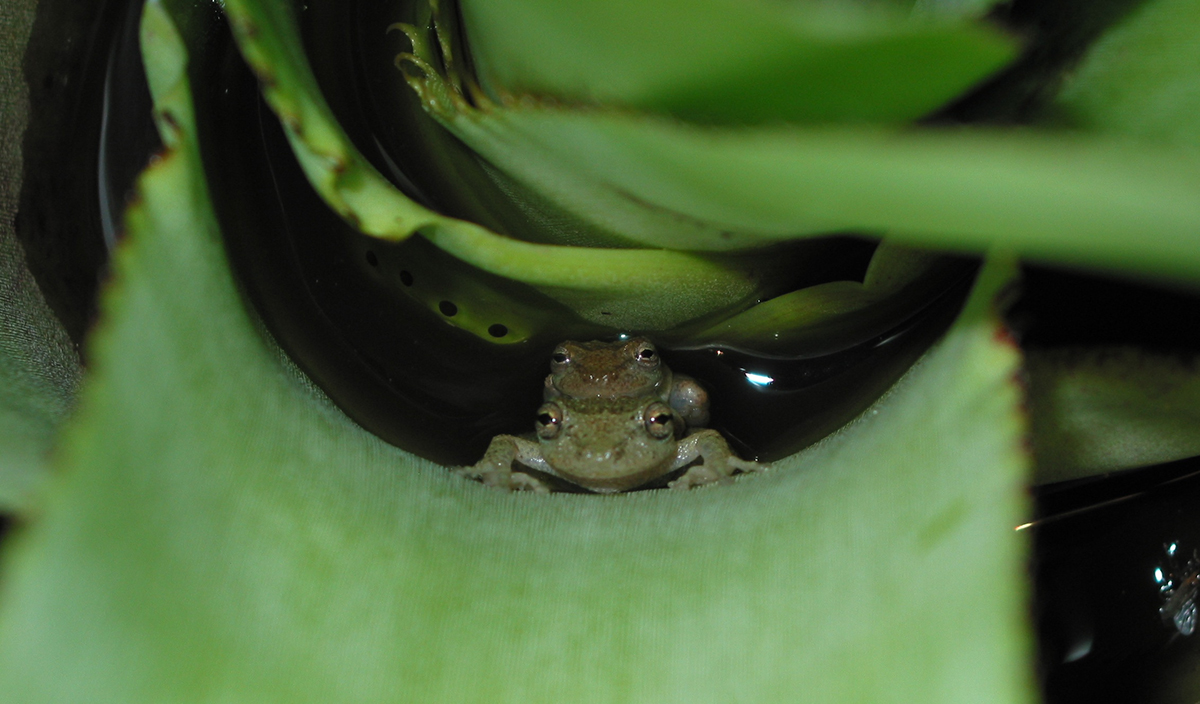Male frogs have sex on land to keep competitors away
By Krishna Ramanujan

When it comes to the birds and the bees, frogs are remarkably diverse: They do it in water, on land and on leaves.
Researchers have assumed that natural selection drove frogs to take the evolutionary step to reproduce on land as a way for parents to avoid aquatic predators who feed on the eggs and tadpoles.
A new study by a team including Cornell frog biologists, published July 26 in American Naturalist, shows for the first time that some frogs hide eggs on land to reduce competition from other males who also want to fertilize those eggs.
“We thought maybe it’s not just natural selection [driving the adaptation to reproduce on land], maybe this is actually sexual selection,” said Kelly Zamudio, the Goldwin Smith Professor of Ecology and Evolutionary Biology and the paper’s corresponding author.
In the study, researchers analyzed data on reproductive modes for two families of frogs (Hylidae, or tree frogs, and Leptodactylidae, including about 900 species that are mostly found in Central and South America). Co-author Cynthia Prado, a former Zamudio Lab postdoctoral researcher who is now an assistant professor at São Paulo State University in Brazil, discovered male frogs in species that fertilize eggs on land have smaller testes than the males of species that fertilize eggs deposited in the water.
That’s because in the water males compete with each other to fertilize eggs. “It’s not only them competing but it’s their sperm competing. If you have larger testes, you can produce more sperm and can fertilize more eggs,” Zamudio said.

But on land, where males may build hidden chambers and then call females in to lay eggs, for example, “the males have smaller testes, they don’t need to produce that much sperm because they are getting the eggs away from other males, and there is no competition,” she said.
Frogs are known to have up to 40 reproductive modes, with new ones still being discovered. Some species build hidden chambers on land or females lay eggs in folded leaves or in bromeliads, others lay eggs in water and move them or their tadpoles to land, and others get rid of the tadpole stage entirely.
The study sheds light on evolutionary forces that drive diversity. Also, the results give conservationists insights on habitats and species that may need more protection, Zamudio said.
“More specialized reproduction modes, like the ones that are terrestrial, are less frequent, and typically, when species get threatened, because of climate change or habitat disturbance, the species that go first are the ones that are more specialized. They have requirements above and beyond just having a pond,” Zamudio said.
Co-authors include Rayna Bell at the University of California, Berkeley; and Renato Nali and Célio Haddad, both at São Paulo State University.
The study was funded by the National Science Foundation, the São Paulo Research Foundation and a University of California Chancellor’s Postdoctoral Fellowship.
Media Contact
Get Cornell news delivered right to your inbox.
Subscribe